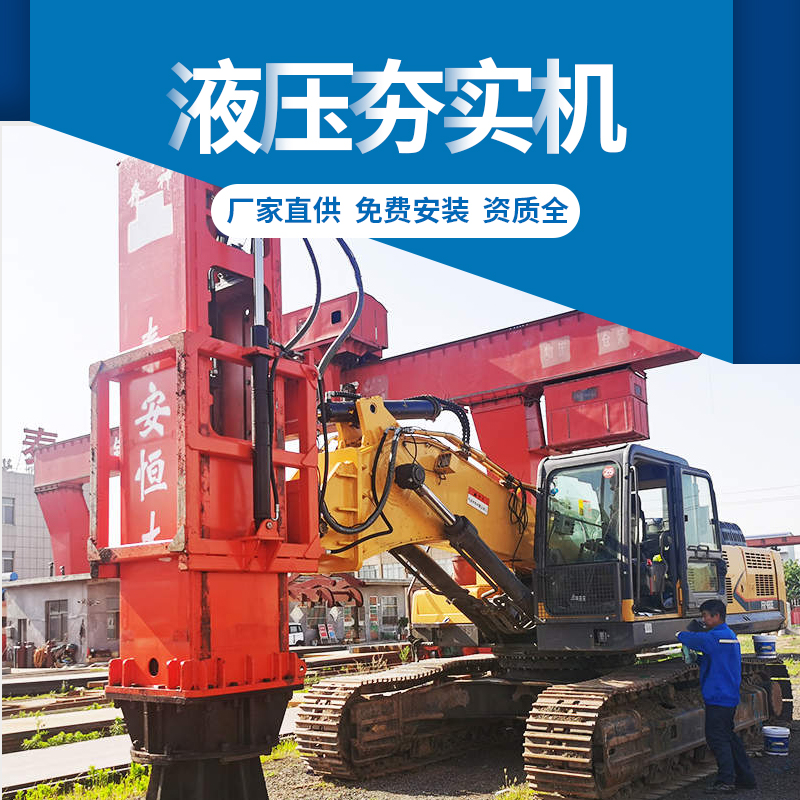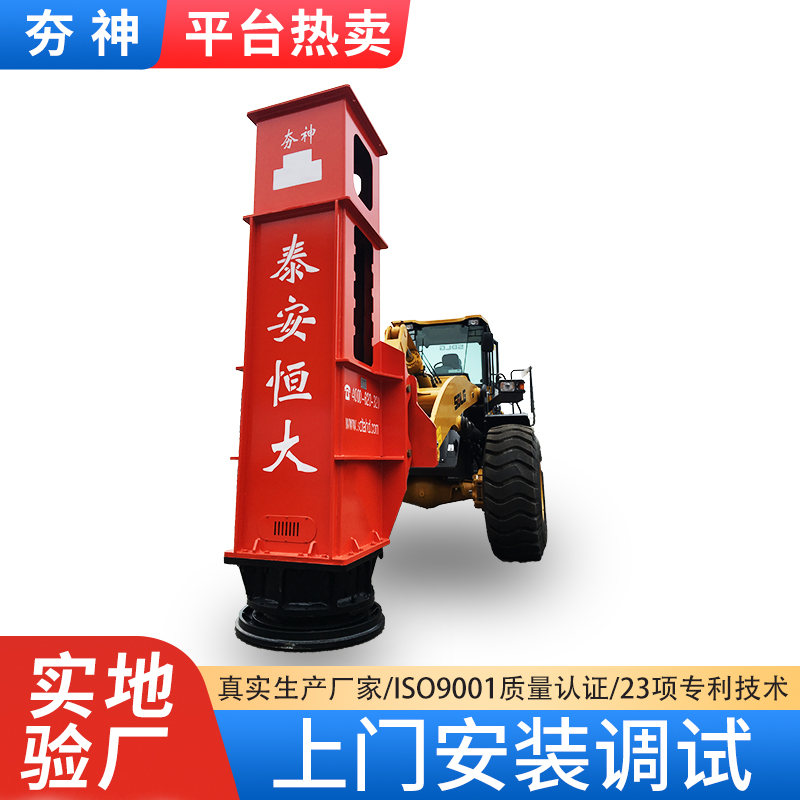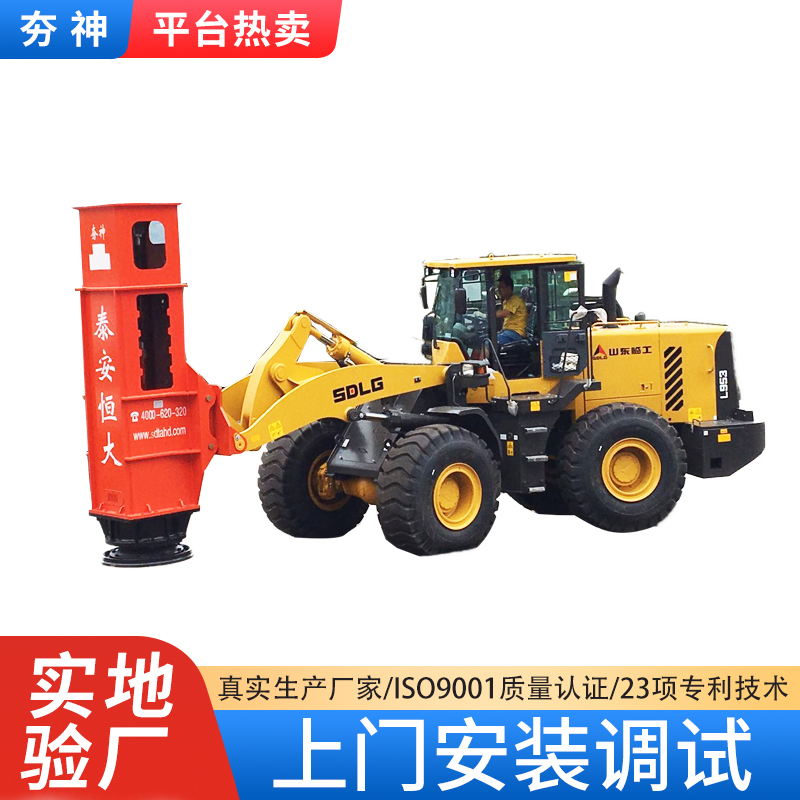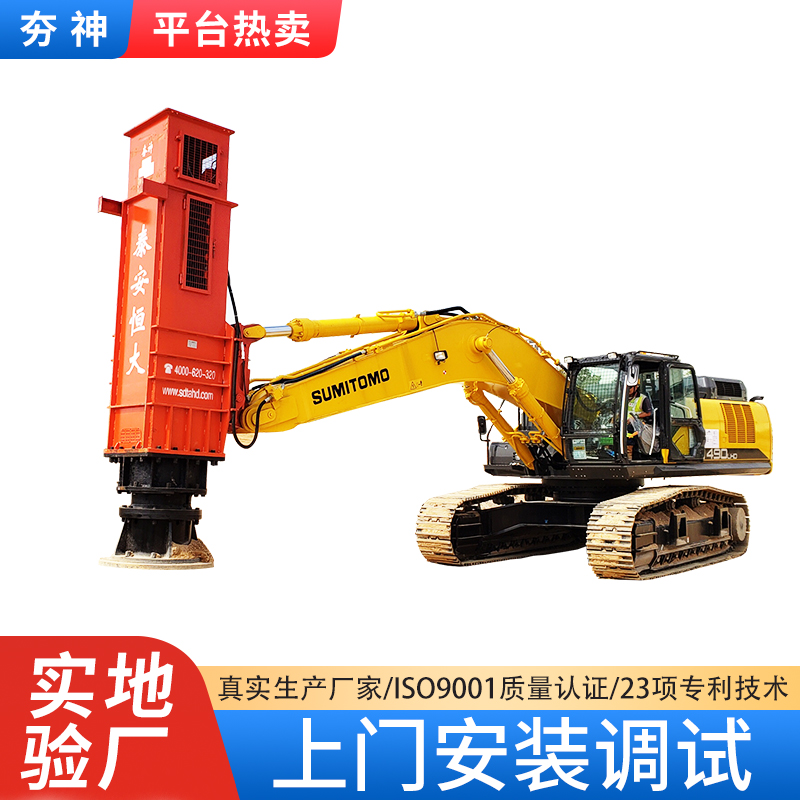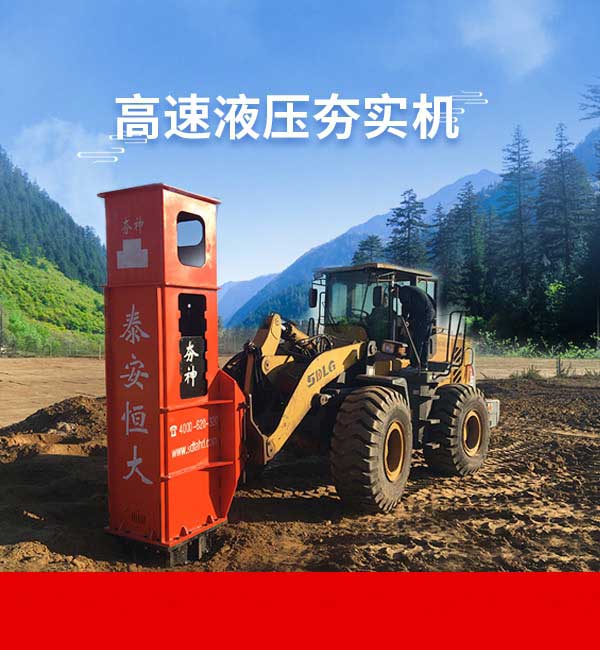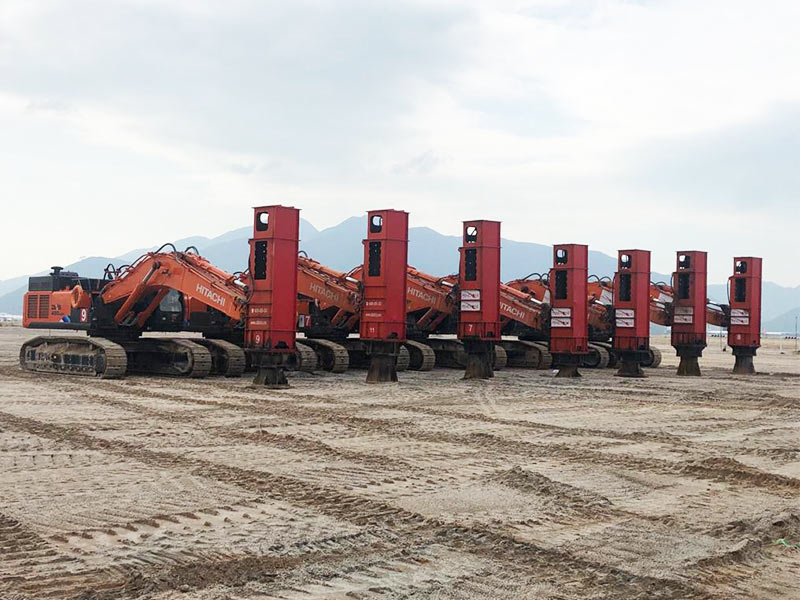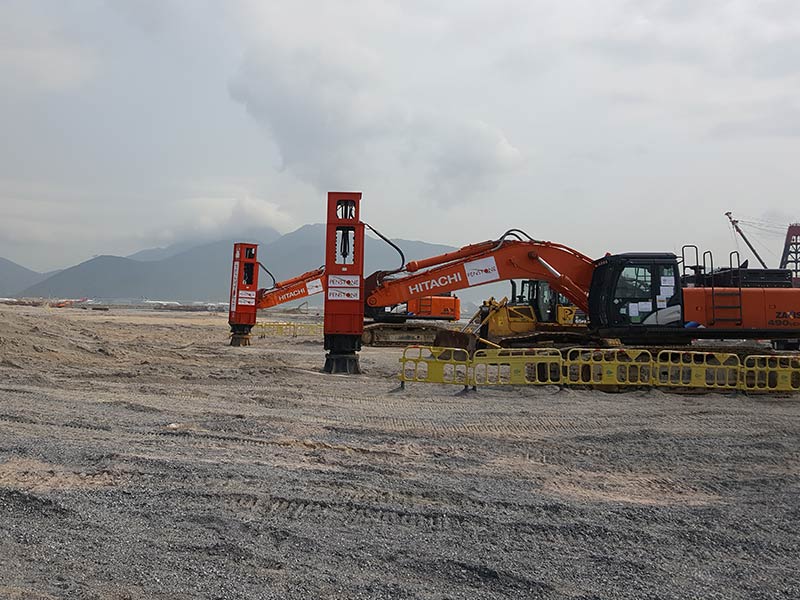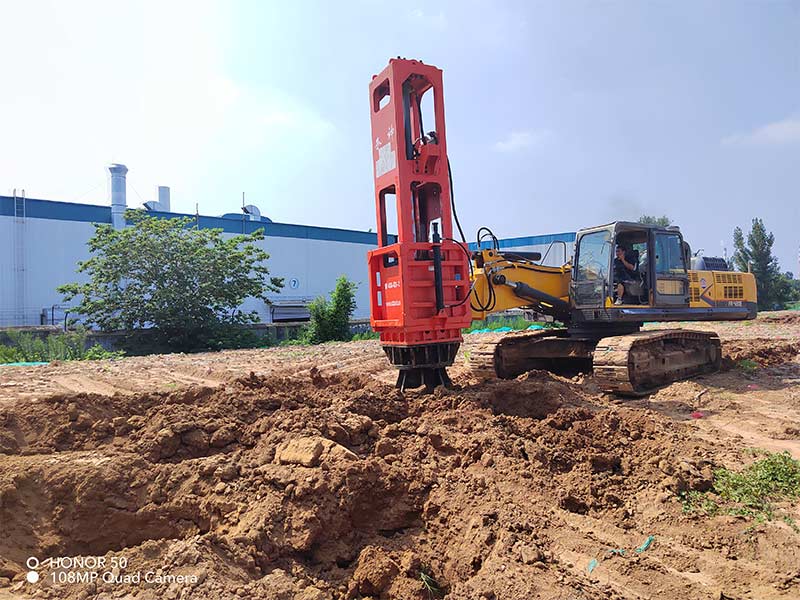Compacted soils provide a stable foundation for homes and streets, but they are not ideal for plant growth or water movement. Typically, a good soil has 50% solids, 25% water and 25% air.
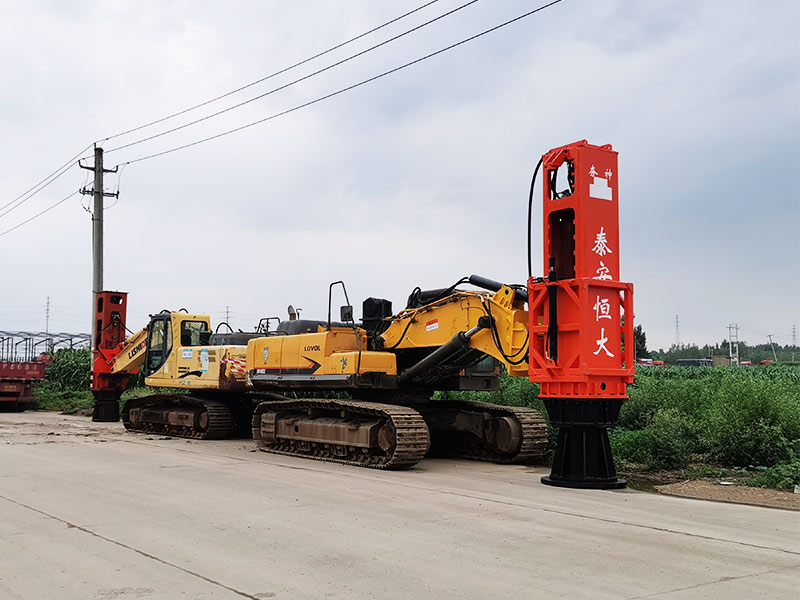
The compaction sequence is designed to work from the outside in; so that compaction energy can affect the soils at the deepest depths first …points designated 1… followed by compaction of soil in between in the upper zone …points 2 and 3. In this way the compaction energy is used efficiently to reach the deepest depths possible.
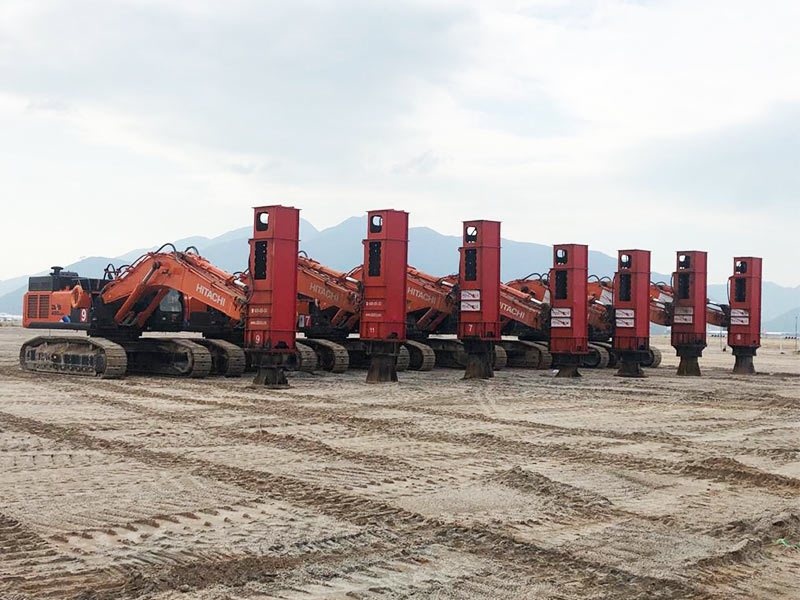
The technique can usually be employed within 10-15m of sound structures with the vibrations significantly less than traditional dynamic compaction. RIC can also be used in shallow granular fills containing contaminants where penetrative ground improvement techniques such as Vibro Stone Columns would risk exposing contaminants to the atmosphere.
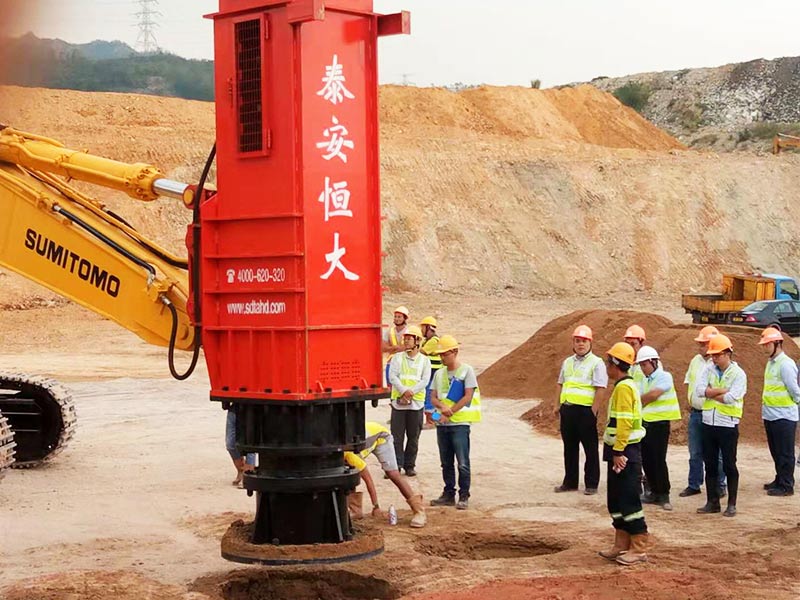
The energy and deflection of the soil is monitored and recorded at each location, which allows the geotechnical engineer to determine when effective treatment is complete. It also enables the engineer to identify weak zones (red dots) or debris zones throughout the pad so that any remedial actions that may be required can be minimized resulting in cost savings.
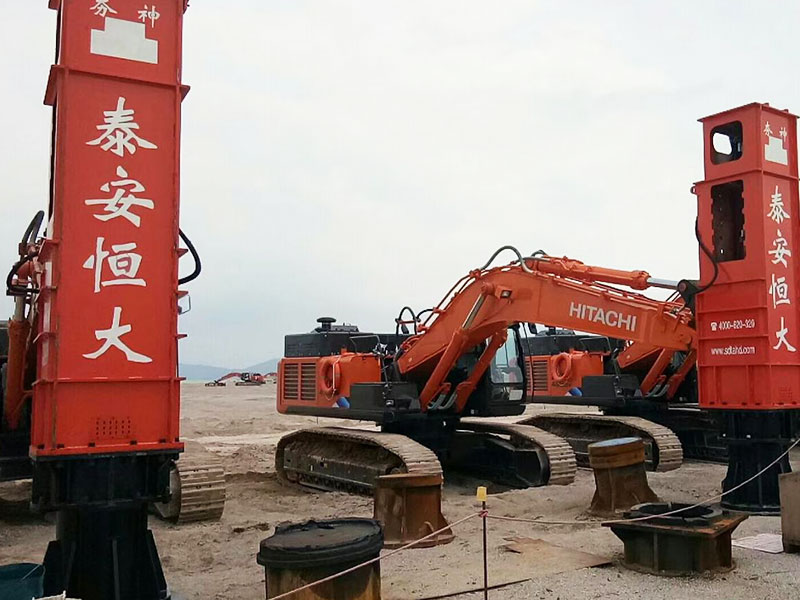
Small Buildings and Floor Slabs – RIC has been used to improve soil under 2 to 3-story building footings and floor slabs.
Replace Surcharging – Instead of using a surcharge to consolidate the soil under a static weight, Rapid Impact Compaction consolidates it immediately.
Replace Over Excavation – Loose fills or soils can be consolidated immediately without the need to replace the soil.
Improve Lateral Load Capacity for Piles – The lateral load capacity of a pile is greatly influenced by the stiffness of the upper 10 feet of soil in which it is driven. By densifying the upper layers of soil the lateral capacity is greatly increased.
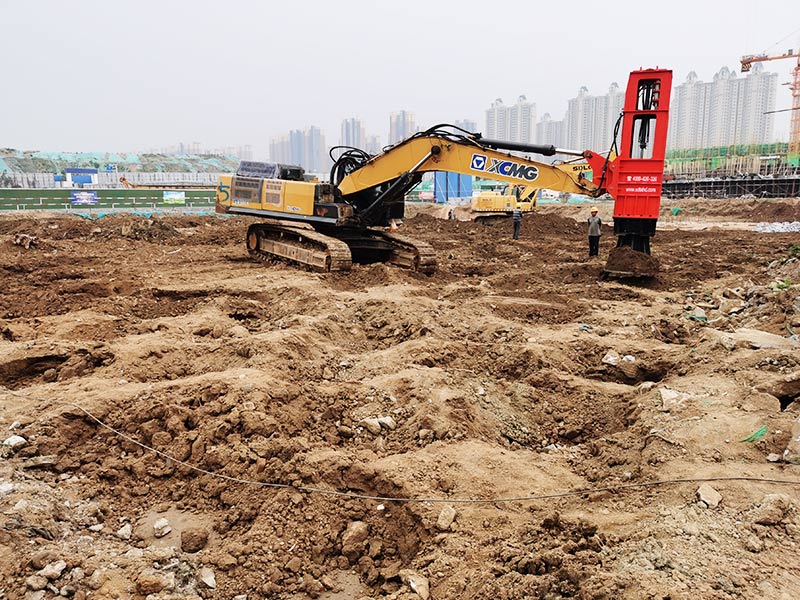
One advantage of RIC is that the drop height and number of blows can be varied based on the soil conditions. Through a test program, we will work with the Geotechnical Engineer of Record (GER) to determine the appropriate improvement criteria and RIC set-up for various areas of the site. For a site with a mixed soil profile and varying thicknesses of sand and clay, the ability to accurately control the amount of energy delivered to the ground is critical as it allows one to improve the loose overlying loose soil without liquefying the fine grained soils below – providing more uniform compaction.
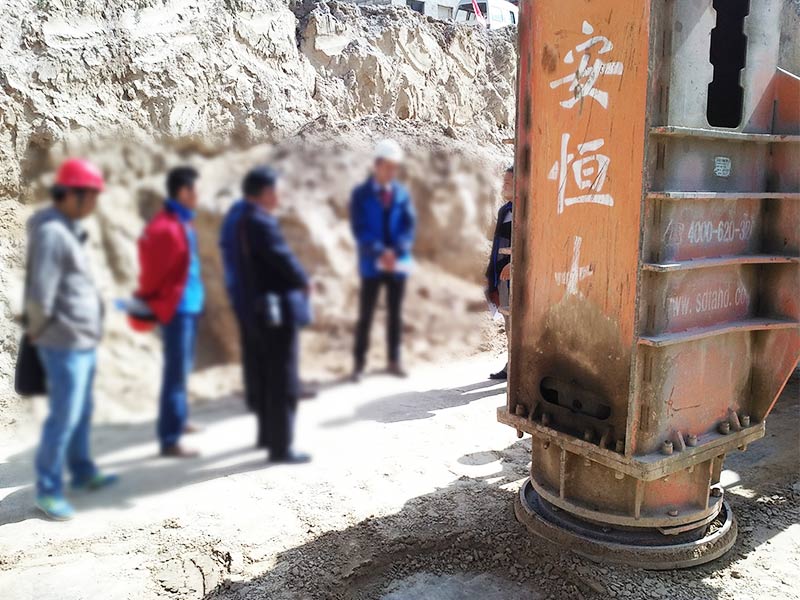
The RIC compactor is mounted on a excavator so that moving around the site is easy. The compactor consists of a 7.5-ton weight falling approximately 36 inches onto an anvil in contact with the ground at a rate of approximately 40-90 blows per minute thereby compacting approximately 800 sf of area per hour. Onboard diagnostics equipment allows the compaction effort to be stopped when optimum compaction has been achieved.

 Current Position:
Current Position: 